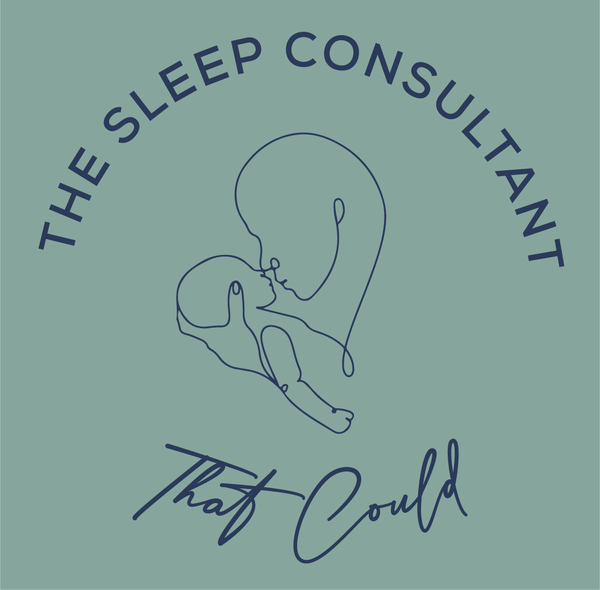Stage 3
Is when wonderful things happen. Our body starts repairing and rejuvenating the immune system, muscle tissue, and energy stores, sparking growth and development.
Stage 4
Is what is famously known as REM (rapid eye movement) sleep. This is where the brain starts to kick in and consolidate information and memories from the previous day. It’s also the stage where we do most of our dreaming.
And that’s it. When all the stages are done, we either wake up or go through another entire cycle until is time to wake up for good.
So going back to regressions, how is all this related anyways?
Did you know that newborn babies only have two stages of sleep? Crazy right? But it’s true! They spend about half their time in each stage, but at around three or four months old, they switch to the four-stage sleep cycle that they’ll follow for the rest of their life. This change means they spend less time in REM sleep (about 25%), which is actually less light than the new stages they’re getting used to. As a result, with more time spent in lighter sleep, there’s a higher chance that babies will wake up.
Now, that doesn’t mean we have to prevent baby from waking up. That’s not realistic or sustainable. Waking up is completely natural. We do it all the time, sometimes we are unaware of it, and sometimes we simply go back to sleep after realizing our alarm clock says it’s 3 am and it is not time to go to work yet. And we are so good at coming back to sleep that, the next morning, we don’t even remember the brief encounter with consciousness.
A four-month-old baby, of course, doesn’t have the skills to read clocks. Actually, the whole situation could be very scary for a four-month-old baby who fell asleep while being rocked, breastfeeding, or bottle feeding. All they remember is that they fell asleep in those situations, and now they are in this crib; it’s all dark, no rocking, no boob or bottle in their mouths, and
they are probably thinking: “Where do they all go!” Ok, that’s probably an exaggeration, but who knows what goes on in the mind of a four-month-old baby?
Anyways, now that the baby realizes that they don’t have all those beautiful things that put them into a deep sleep is logical that they will let you know, by crying their tiny heads o, that they are not ok, and you need to come back and recreate all those things again so they can sleep again. Some of the most significant contributors to this so dreaded four-month regression, I find, is
that up until this stage of the game, all those tools that you have been using were working wonderfully to drift o your baby into a sweet sleep, but now they have also become the babies must sleep-tools and therefore, they expect them to be there, at ALL times. And when this happens every half an hour, tears begin to be spilled, not the babies, YOURS! Let’s not forget one thing; our babies are growing every day. Babies grow more aware of their environments month by month; they get familiar with routines, schedules and people. The baby that used to sleep like an angel from 9 pm until 3 am when he was one or three- months old is not the same today.
The truth is that babies go through many changes and milestones through the first two years. If we are going to yield regression each time our baby learns a new skill, we won’t sleep again. Sleep props or associations can be very sneaky because although they may be helpful initially, they do have a life shelf. That means your now four-month-old baby cannot go back to sleep again without some outside help. Cue the fight-or-flight, the crying, and the adrenaline, which for babies and us, acts as pure caffeine. So, the good news for anyone experiencing the feared four-month sleep regression is that it’s not, in fact, a regression at all. I mean, what does Larousse say about regression? A regression is defined as “reversion to an earlier mental or behavioural level,” and that’s actually the opposite of what your baby is experiencing. This would be much more aptly titled the “Four Month Sleep Progression”
So now, onto the big important stu; What do we do to help our little ones get into this four-sleep progression as smoothly as possible?
First things first, the nursery. Yeap, I know you saw it in a magazine, I know you spent hours or days picking up the decor, and I bet the baby space looks amazing. But when it comes to sleep, the more boring, the better. Remove toys or stuff with too much colour that the baby might see, at least for bedtime. And make sure that there’s nothing on the baby’s crib. And since we are talking about the baby’s room, what’s with all that light? I know that lamp looks cute, but seriously baby’s room should be dark. And by dark, I mean coal mine on a moonless night dark ( I love these portable blackout curtains that you can take anywhere). But seriously, newborns and infants are not afraid of the dark. They are, however, responsive to light. Light tells their brains it’s time for activity and alertness, and the brain secretes hormones accordingly, so we want to keep that nursery pitch black during naps and bedtime. And if you share the same room with your little one, the same goes for you: cell phones off! Now the other part of the problem, especially during daytime sleep (and nighttime, for that matter, although not nearly as often), is noise. Whether it’s the delivery guy ringing the doorbell, the dog barking at imaginary intruders, or your other busy toddlers chasing each other, it’s enough to make you nervous. And when you have a baby who spends most of their time in lighter sleep, any noise can startle them and wake them up. So before getting rid of Rufus, cursing at the poor delivery man or garbage truck, I highly recommend investing in a
white noise machine for your nursery. Trust me; it’s a game-changer.
But wait, isn’t that a prop? You are probably asking yourself. It is! But a good one. Ha! I didn’t tell you that? There are good PROPS! Good props don’t require any winding, resetting, reinserting, or parental presence. It’s just there and can be on as long as the baby’s sleeping, so it’s not a prop we need to avoid. Finally, a bedtime routine. They are so important in getting your baby to sleep well; I cannot stress it enough. Make a simple bedtime routine that is easy for you and your partner to follow every night. Do not make it long; try to keep the routine to about 4 or 5 steps, and don’t end it with a feed. Ideally, start your routine with a feed, then follow the next steps.
Otherwise, you risk the baby nodding o at the breast or bottle, which will create the dreaded “association” we discussed earlier. So try to keep the feed near the beginning of the routine and plan the songs and stories (yes, you can read to a four-month-old baby), and get into PJs towards the end. Making the routine about 20 to 30 minutes max is a good amount to cue the baby that is time for bed without making it too stressful. If you’re noticing baby getting fussy before bedtime, you’ve probably waited too long. Every
baby is different, but I found that a four-month-old baby’s awake window is about two hours, and bedtime should be between 7 and 8 at night, allowing you to have a decent amount of me time. Yes, you read well, and you and your partner can have some alone time, baby free. I still remember the first months with baby number one. I’d put the baby to sleep for the night, and my husband and I would have a romantic dinner on our terrace; even when it was take-out, those dinners tasted so good because they were warm, and I didn’t have to eat with one hand.
Now, there will always be hiccups in your little one’s life. Travelling, illness, wiggling teeth, etc. can cause your little one to have a few bad nights in a row, and that’s fine; that’s parents’ life. But regarding the four-month “progression,” I’m extremely relieved to reassure you that this is a one-time thing. Once your baby crosses this rocky month, he will have finally moved into the sleep cycle they’ll essentially be following for the rest of their life. So look at this stage on the positive side. Take it as an opportunity to teach them the skills they need to string those sleep cycles together independently, prop-free, without any need for nursing, rocking, or pacifiers, and the opportunity to clear all that accumulated dust under the carpet finally. Teaching your children these skills is a valuable gift that will benefit them for the rest of their young lives and is a gift to you too, tired mama. And because we are talking about kids, and they are so so different, of course, some will learn it in a couple of nights, and some will give you a bit more of a battle. If yours falls into the first category, you are blessed. Take delight in your success, and spread the word to all your
friends on Facebook. No, seriously, post it; It is a big deal!
For those who are not so lucky, I’m happy to help you navigate that rocky, messy stage. I am always a click away and ready to work on a customized program that works for your little one and your family. After working with clients, the most common thing I hear is, “Why didn’t we try this sooner?!” So, if you were contemplating hiring a sleep consultant, now is absolutely the time. A click on my free 15-minute evaluation is the first step in getting your little one to sleep through the night!
Take a look at my fully customized sleep plan packages HERE.
Not ready to commit but still need professional help to navigate the 4-month regression? A 20-minute consultation over the phone or videoconference plus 1 email re-cap with a plan of action is only CAD 55! Book HERE.
Night, Night





